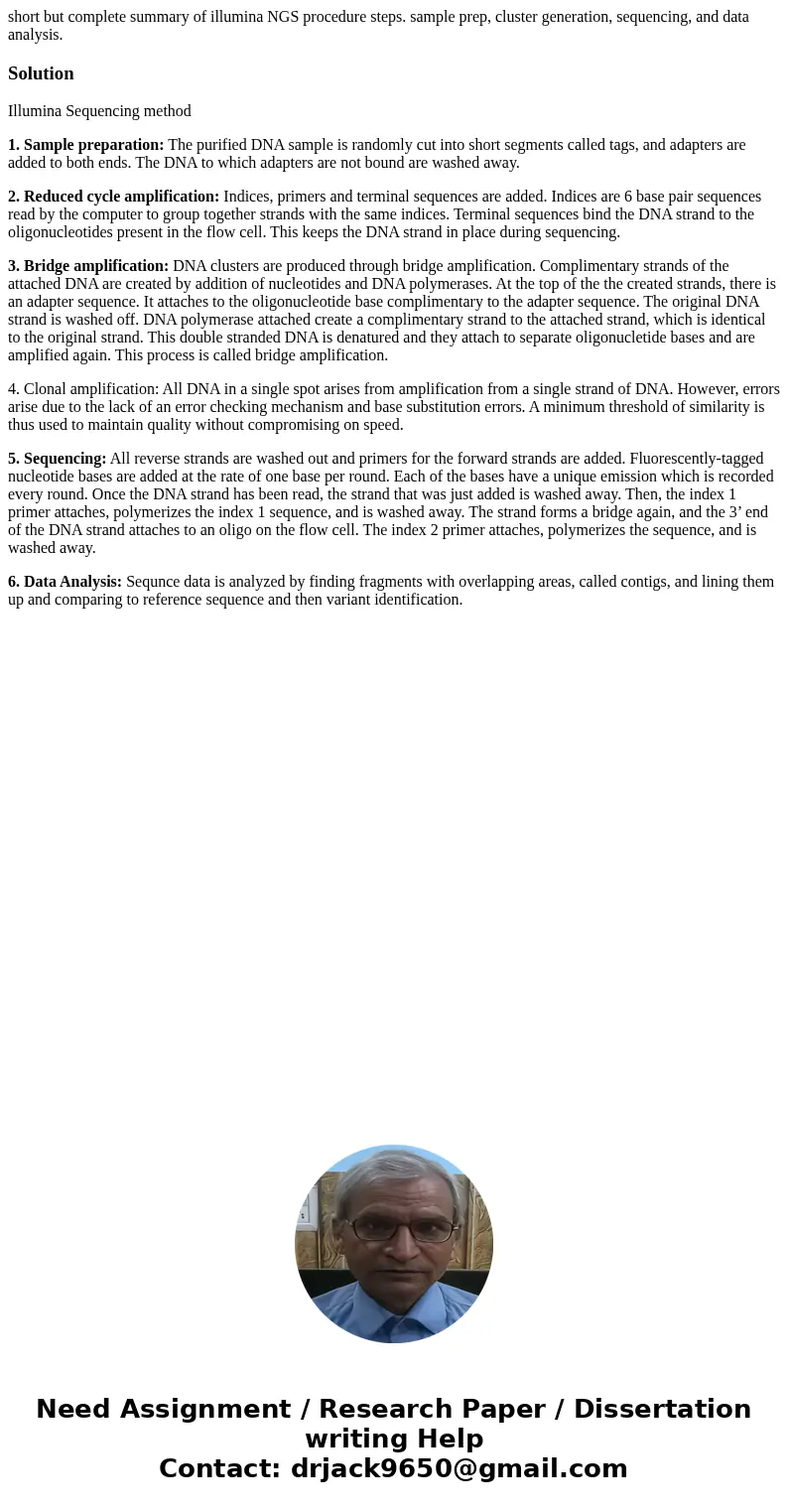short but complete summary of illumina NGS procedure steps s
short but complete summary of illumina NGS procedure steps. sample prep, cluster generation, sequencing, and data analysis.
Solution
Illumina Sequencing method
1. Sample preparation: The purified DNA sample is randomly cut into short segments called tags, and adapters are added to both ends. The DNA to which adapters are not bound are washed away.
2. Reduced cycle amplification: Indices, primers and terminal sequences are added. Indices are 6 base pair sequences read by the computer to group together strands with the same indices. Terminal sequences bind the DNA strand to the oligonucleotides present in the flow cell. This keeps the DNA strand in place during sequencing.
3. Bridge amplification: DNA clusters are produced through bridge amplification. Complimentary strands of the attached DNA are created by addition of nucleotides and DNA polymerases. At the top of the the created strands, there is an adapter sequence. It attaches to the oligonucleotide base complimentary to the adapter sequence. The original DNA strand is washed off. DNA polymerase attached create a complimentary strand to the attached strand, which is identical to the original strand. This double stranded DNA is denatured and they attach to separate oligonucletide bases and are amplified again. This process is called bridge amplification.
4. Clonal amplification: All DNA in a single spot arises from amplification from a single strand of DNA. However, errors arise due to the lack of an error checking mechanism and base substitution errors. A minimum threshold of similarity is thus used to maintain quality without compromising on speed.
5. Sequencing: All reverse strands are washed out and primers for the forward strands are added. Fluorescently-tagged nucleotide bases are added at the rate of one base per round. Each of the bases have a unique emission which is recorded every round. Once the DNA strand has been read, the strand that was just added is washed away. Then, the index 1 primer attaches, polymerizes the index 1 sequence, and is washed away. The strand forms a bridge again, and the 3’ end of the DNA strand attaches to an oligo on the flow cell. The index 2 primer attaches, polymerizes the sequence, and is washed away.
6. Data Analysis: Sequnce data is analyzed by finding fragments with overlapping areas, called contigs, and lining them up and comparing to reference sequence and then variant identification.

 Homework Sourse
Homework Sourse